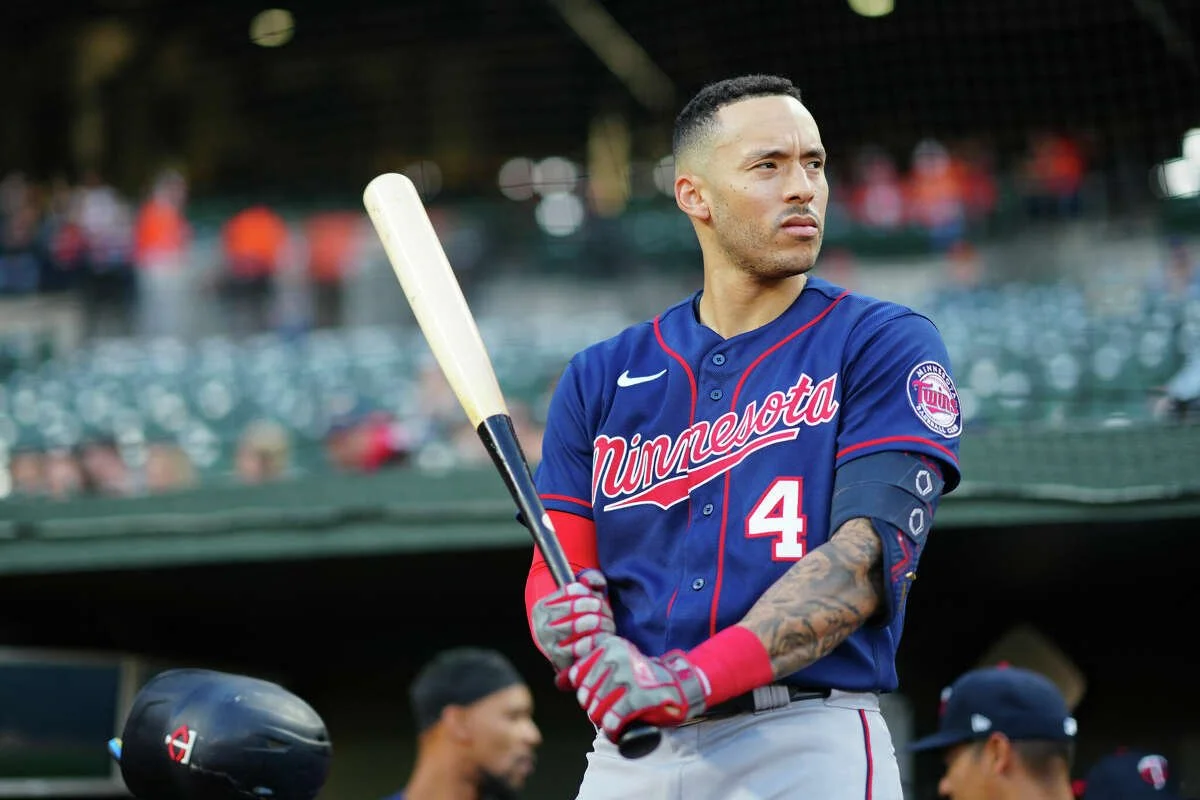The Curious Case of Carlos Correa
Credit: Daniel Shirey/MLB Photos via Getty Images
In late 2019, Carlos Correa became one of baseball’s biggest villains.
Fans from across all 29 other teams heckled the then Astros shortstop online. Some wrote vicious tweeting attacking him and his teammates for their role in Houston’s 2017 cheating scandal. Others began combing through hours of footage from the now infamous season for the sound of a bang within the booming confines of Minute Maid Park.
Instigators and investigators all agreed that no matter what happened, the hate would follow the Astors wherever they went. Not even a global pandemic silenced their shouts. They took to the stands in 2021 with trash cans in hand and all their taunts prepared from the previous year pouring from their mouths. The Astors were reviled. Their championship now flimsy and its legitimacy forever questioned.
Yet once Correa, arguably the poster boy for the scandal, reached free agency his market was far from bare. The Chicago Cubs, Baltimore Orioles, New York Yankees, and Philadelphia Phillies entertained the two-time All-Star before the Minnesota Twins signed him to a three-year contract worth $105.3 million.
Front offices did not share the same fervor as their fans. They knew Correa’s reputation, likability, or lack thereof, but sided with his potential. For further proof, Correa’s $35.1 million salary is the highest among all shortstops and seventh among all MLB players this season.
Yet neither his story, salary nor the sizeable interest is what makes Carlos Correa solely fascinating. What makes Correa such a compelling character in the cavalcade of baseball is the structure of his contract.
Yes, the Twins signed him to a three-year contract. However, at the end of this season or next, Correa can leave the Twin City whenever he wants and do whatever he pleases with his career. Yet this contractual freedom flies in the face of baseball’s conventions.
In baseball, there are two ways to acquire a star.
The first is to find them before they’ve even earned the title. Either through the draft or international signings before developing them. If this is accomplished, teams will pounce on a player’s youth to pry them into a cheap long-term contract. Ozzie Albies, Ronald Acuna Jr., and KeBryan Hayes all inked deals tying them to their teams for at least seven seasons while earning a fraction of their worth.
If you cannot develop a star, acquire one. Trade for the underpaid All-Star or the pending free agent from a team that’s unwilling to make a commitment. Think Francisco Lindor, Nolan Arenado, Bryce Harper, or Jesse Winker.
This is baseball's conventional wisdom. Carlos Correa, however, does not believe in this. At 27-years-old, he is in the projected prime of his career. This was his moment to cash in on his career accomplishments and establish generational wealth. Yet he intentionally chose not to tie himself down contractually.
Where other shortstops secured six, seven, and ten-year contracts this winter, Correa’s safety net runs out after three years. He has made a gamble that at any point in these next three seasons, he will maximize his next contract so long as he maximizes his statistical production.
On the surface, Correa appears to be doing just that. His .275 batting average is second on the Twins. His .346 on-base percentage is third among all starters. But discounting the 2020 season, his .400 slugging percentage is the lowest it’s ever been in his career. Worse, his 2022 slugging percentage is .78 points below his career average. As a result, his .746 OPS is the third-lowest of his career.
But how? How can a hitter who has finished with at least 20 home runs five times only have two long balls 31 games into this season? How can he go from a career home run percentage of 4.0% to a paltry 1.5% with 133 plate appearances in 2022?
Like his contractual status, Correa’s statistical numbers defy logic. He is currently in the 96th percentile in hard-hit percentage, 93rd percentile in max exit velocity, and 91st in average exit velocity, according to Baseball Savant. Even more confusing, his 54 percent hard-hit rate is the highest it’s ever been in his career, and his 19.5 percent flyball percentage is well in-line with his career average.
And so the question remains. How can a historically sound power hitter struggle so severely while excelling everywhere else?
Truthfully, there is no answer. One might assume Correa’s 18.4 opposite-field percentage is the culprit. Yet only 29.6 percent of Correa’s career home runs have gone to the opposite field. Meaning that while possible, this does not explain such a rapid decline.
But If Correa wants to maximize his production and his future contract; If he wants to shed the title of a villain and reclaim the mantle of a hero or perhaps a mercenary, he needs to find out if defying baseball’s conventional wisdom can work a second time.
